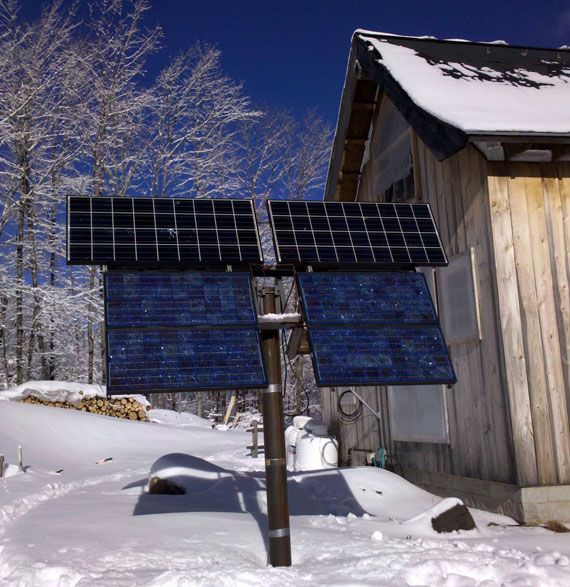- 603•370•0758
- Louis@LiveForLife.ws
- Mon - Sat 8:00AM - 5:00PM

Hello my name is Louis, I have always liked the idea since I was young, of having my own home on a remote area of land on top of a mountain. I was raised around the construction trades, so I’m no stranger to what it takes to designing and building a home in the New England area. In 2008 after I was medically retired from the Marines, I decided it was time to start planning for my home on a mountain. The traditional ways of designed and building were not cost effective for building in remote locations. The design and building were not using all of the abundant resources provided by the location and the land. So I began my search for alternative ways to design and build homes that are better suited for remote locations by using energy more effectively, efficiently and still allow the home to be enjoyable, comfortable and most of all beautiful and inviting. In 2009-2010 my friends purchased land and wanted to power their campers from photovoltaic panels, and did not want to rely on generators. This allowed me to start putting my studying of renewable energy systems into practical application and learn hands on. I started Live for Life Alternative Energy in the spring of 2011, and since then it has been an amazing life with interesting people. I’ve been involved in building and integrating renewable energy into earthen yurts, earth-ships, timber frames and traditional stick framing. I don’t just install renewable energy I live it, since 2013 I have lived in a remote location with renewable energy systems, as my main source of electricity and heat.
Learn More

Call Live for Life Alternative Energy to see if photovoltaic solar modules, Micro Wind, Micro Hydro or solar thermal can work for you.
Do you have a preexisting energy system, a new renewable energy system or are you in need of information to see if a self sufficiency renewable lifestyle is for you?
Are you expanding a preexisting renewable energy system? Need to upgrade your preexisting renewable energy system?
Is your renewable energy system not functioning as good as it once did? The PV not producing the watts it once did on those sunny days?
If you wish to leave the installations to skilled workmanship, Live for Life Alternative Energy can install your renewable energy system.
Is also part of the service we provide, which can be used for watering livestock, gardens, small farm irrigation and even your domestic water for your family.

Art Studio, PV modules and charge controller
Home Barn Stand-alone renewable energy system Location:
Blue Ridge Mountains Standalone with Two arrays
Central VT Stand alone system PV 2.4

Solar thermal has three categories of heating, 1 the sun direct energy warming a mass, usually brink or masonry, 2 sun direct energy warming air using a collector to warm the air as it passes through the collector, and 3 sun direct energy warms a fluid, just like air but the medium is now a fluid used to transmit the heat to a storage tank.
Is customer owned hydro turbine, that produces energy all year, or during colder seasons. Using a small stream located near remote cabins, small farms, small businesses and homes. Usually consist of high upfront cost, BUT, if maintained will provide a long service life, with a great source of energy and a great return of value. Depending on your energy demands you will need a minimum of 5 gallons per-minute at 80 feet of head or 15 gallons per minute at 15 feet of head. Micro hydro is a great combination with photovoltaic solar to make a hybrid energy source, because streams tend to flow more water in fall, winter and spring when the sun irradiance is shortened or it is cloudy.
Is a customer owned wind turbine, that produces energy for remote cabins, small farms, small businesses, homes, even sail boats and more.
Micro wind is a great combination with Photovoltaic solar to make a hybrid energy source, because wind blows even when the sun is not shining or on cloudy days.
Is just a solar panel like you see on roofs and in fields.
A self consumption renewable energy system consist of most of the same components as a standalone renewable energy system, except when the SOC% (state of charge) of the batteries drops to a set percentage, all AC load transfer to the utility grid, this allows you to use the energy you produced from your renewable energy source allowing for a smaller renewable energy system, but not limiting energy consumption. Let’s say you have friends or family visiting and need a few more kilowatts, not a problem. This example is a brief introduction to a self consumption system; your AC loads have consumed 20%* percent of your energy storage and no sun, wind or hydro is available or minimal, so, your energy storage is at 80 SOC%* and transfers the AC Loads to the grid, leave you with 30%* energy storage in-case the utility grid is unavailable at that time. This will give you the freedom and security knowing your critical loads will have power 24/7, and worst case scenario we can add a generator as a redundancy if grid is down longer than expected with no sun, wind or hydro available or minimal, this rarely happens but also depends on size of your renewable energy system.
(* most energy storage chemistry only allows 50% of the battery to discharge from the battery bank)
A stand-alone renewable energy system consists of energy storage batteries, inverter (convert CD to AC), a charge controller allows us to properly charge batteries from a renewable energy source such as Photovoltaic solar modules, Micro Wind, Micro Hydro.